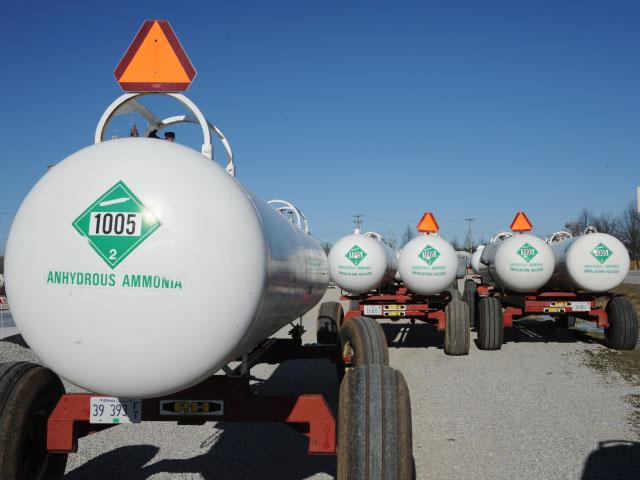Production Blog
Take Anhydrous Safety Seriously
Anhydrous ammonia tanks have started to move. The call to be safe while moving and handling this important crop nutrient is personal for this writer. I experienced a much too close call several years ago while photographing anhydrous being applied. Accidents happen fast and it doesn't take much exposure to cause a problem.
The Illinois Fertilizer and Chemical Association (IFCA) offers the following safety reminders for those handling anhydrous ammonia.
1. Remember to always utilize ammonia gloves and chemical splash goggles when working around ammonia. Never wear contact lenses when working around anhydrous ammonia.
2. Stay upwind when making or breaking connections, bleeding lines, or transferring product.
3. Always assume ammonia is present in all equipment or hoses and thoroughly purge the ammonia prior to inspection or maintenance.
4. Inspect ammonia hoses for any nicks, cuts, soft spots, and coupler slippage. When in doubt, purge and change the hose out.
5. Follow the replacement date indicated by the hose manufacturer and remember ammonia hoses cannot be repaired.
P[L1] D[0x0] M[300x250] OOP[F] ADUNIT[] T[]
6. Make sure each nurse tank has 5 gallons of fresh clean water. Additionally, put a gallon water jug in your truck and tractor for emergency flushing.
7. Do a pre-trip inspection prior to pulling nurse tanks to and from the field of application. Check the condition of both the trailer and the tank prior to pulling out onto the roadway.
8. Slow down! Driving speed on roadways should not exceed 25 mph when pulling ammonia tanks.
9. Avoid congested or high-traffic areas when pulling nurse tanks to and from the field of application.
10. You are required to stop at all active rail crossings when pulling nurse tanks to and from the field of application.
11. Always shut off all nurse tank valves and disconnect transfer hoses before pulling onto a public roadway. This is required by law. You should never have a "charged" system when sharing the roadway.
12. Nurse tanks should not be operated in low light conditions or before or after sunset unless you have a rotating, flashing amber light on the tank(s). Today's motorists are not as familiar or patient with farm equipment even in rural areas, so it is always best if slow-moving vehicles are kept off the roads during non-daylight hours.
13. Always use safety chains, even in the field of application. Nurse tank trailers are put to the test during the ammonia season, being asked to serve as both highway vehicles and then being pulled through rough field conditions. The safety chains can save you from catastrophe if the hitch fails. Hook them up every time.
14. Are your breakaway devices working on the application equipment? This is another safety mechanism designed to prevent releases, but they must be installed correctly and maintained so that they work. Proper installation and preventive maintenance are key.
15. Never hesitate to make the call if you have an ammonia release. A reportable quantity (RQ) for anhydrous ammonia is 100 pounds (18 gallons) or more. If you are unsure, you have met the RQ threshold, still make the call. Tell the emergency operator exactly what has happened so that law enforcement and fire departments show up prepared to deal with ammonia. Whoever is in possession of the ammonia tank at the time of the release must make this call immediately. Notifications should not exceed 15 minutes after the person in charge has knowledge of the release. Check state requirements. In Illinois, for example, a written follow-up report is also required.
Find the Illinois Fertilizer and Chemical website here: www.ifca.com.
For the latest DTN article on fertilizer trends and prices, go to https://www.dtnpf.com/….
Pamela Smith can be reached at pamela.smith@dtn.com
Follow her on social platform X @PamSmithDTN
(c) Copyright 2025 DTN, LLC. All rights reserved.






Comments
To comment, please Log In or Join our Community .